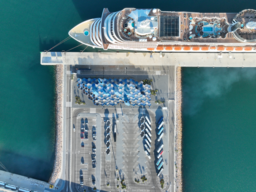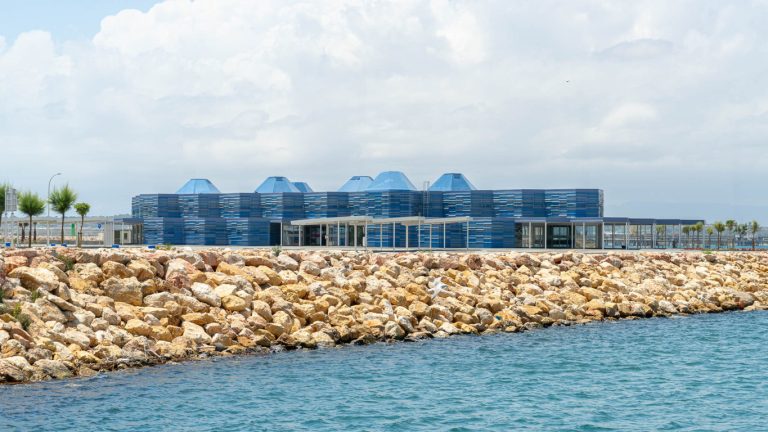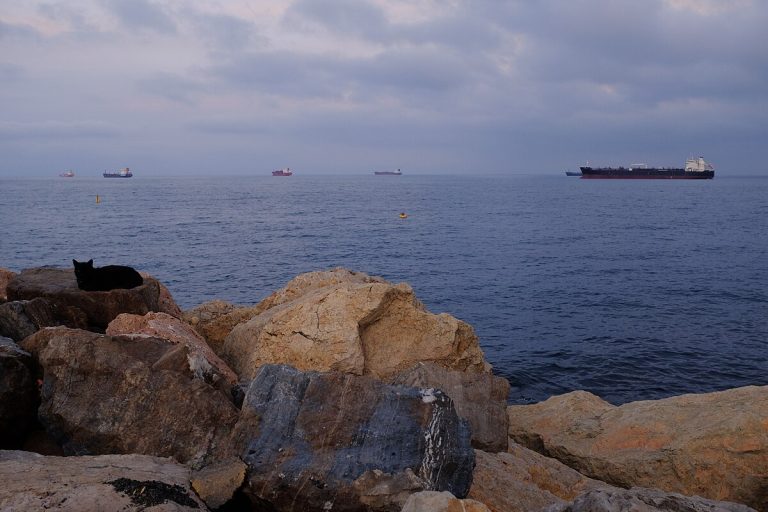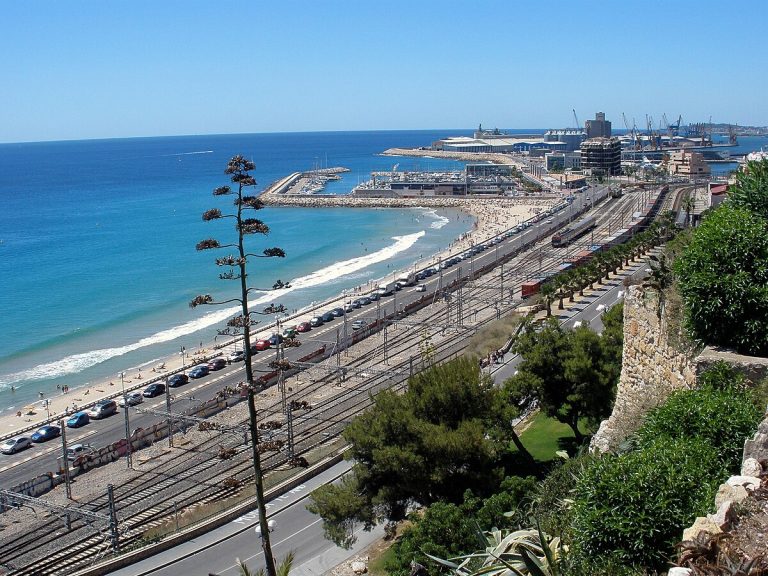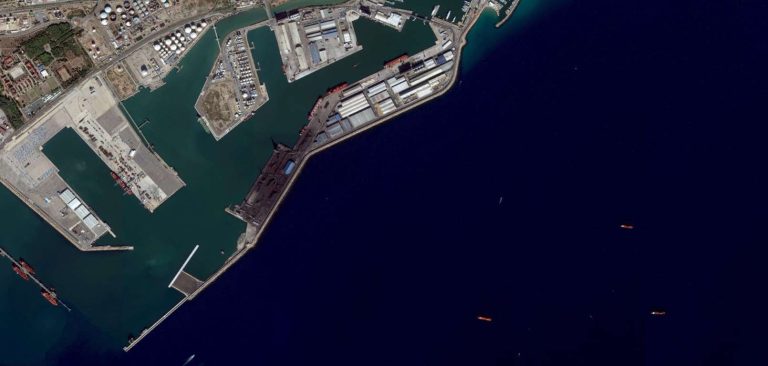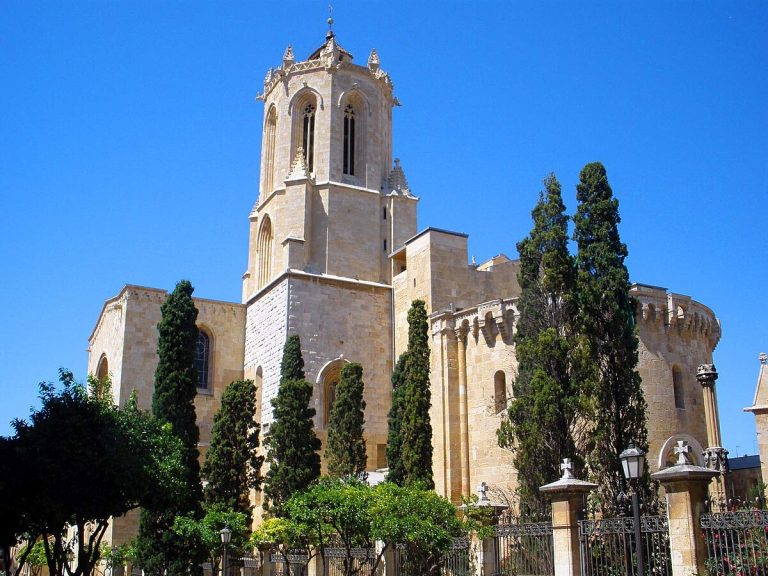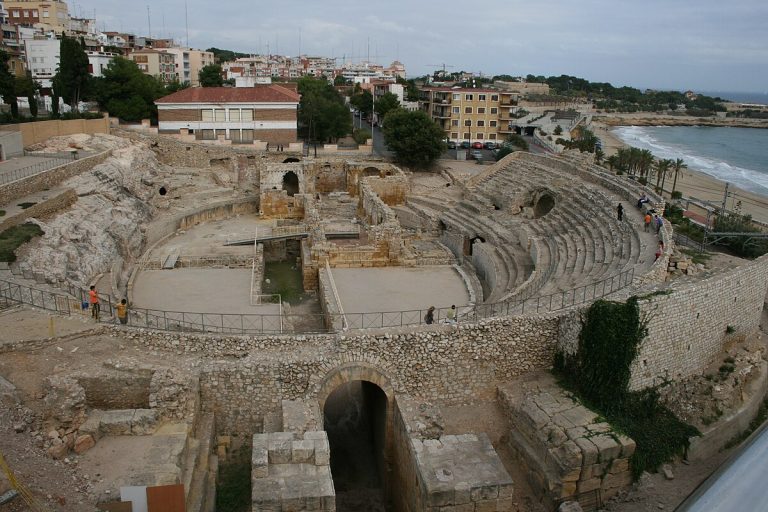Tarragona Cruise Port: a new sustainable era
Just over a year after its inauguration, the new cruise terminal of Tarragona Cruise Port, located on the Moll de Balears and managed by Global Ports Holding, has established itself as an important international model in the port sector.
The facility, officially opened in June 2024, has attracted the attention not only of cruise industry leaders, but also of the world of architecture and industrialized design, thanks to an innovative approach that combines functionality, efficiency, and respect for the environment.
The building was designed by the studio Hombre de Piedra Arquitectos, led by architect Juan Manuel Rojas with the technical collaboration of David Corbella for Global Ports Holding.
From the very beginning, the architectural choice aimed to create an infrastructure that would be more than just a passenger terminal: inspiration was drawn from the Roman mosaics of Tarraco, the ancient capital of the Roman province of Hispania Citerior, and from the trencadís style that characterizes so many Catalan works.
Aeral view of Tarragona Cruise Port
From this fusion came a roof that has become a distinctive feature, visible from the sea and immediately recognizable, capable of ideally linking the modernity of the new infrastructure with the history and cultural identity of the city and the surrounding area.
One of the aspects that has made this project particularly significant at an international level is the construction approach adopted. The terminal was developed through a system of industrialized architecture, with prefabricated elements produced and assembled on site.
This method not only allowed for significant time savings during the construction phase, but above all resulted in a much lower environmental impact compared to traditional methods. Estimates indicate a reduction in carbon dioxide emissions of about sixty percent and a decrease in waste generated of 55%.
The building was also designed to be completely dismountable, recyclable, and scalable: features that allow it to adapt to future needs without requiring further invasive interventions.
Tarragona Cruise Port
The non-orthogonal geometries that characterize it have a practical as well as aesthetic function: they improve passenger flow, simplify operations management, and allow the structure to be expanded or modified flexibly. In this way, the terminal not only meets today’s needs but is also prepared for those that will arise in the coming decades, while keeping sustainability and energy efficiency as its core objectives.
From a functional perspective, the terminal covers an area of about 2,200 sqm and is connected to a quay 759 meters long, capable of accommodating up to four cruise ships simultaneously.
This capacity places Tarragona Cruise Port among the Mediterranean infrastructures best equipped to meet the increase in traffic expected in the industry over the coming years. The interior spaces have been designed to ensure an orderly and smooth passenger flow, reducing waiting times and offering a comfortable experience for both arrivals and departures.
View of Tarragona port
The total investment amounted to 5.5 million euros by Global Ports Holding for the construction of the terminal, in addition to the contribution of the Port Authority of Tarragona, which allocated more than one million euros to adapt the quay.
The structure is part of a broader infrastructure development strategy that has seen the Moll de Balears undergo significant transformation in recent years. The quay was built between 2020 and 2021 with an investment of about 30 million euros, providing from the outset a multifunctional space designed to accommodate large ships and efficiently manage cruise-related operations.
With the opening of the new terminal, the area has taken on a complete configuration, equipped with passenger services, tourist information points, commercial areas, and dining spaces, making transit through the port of Tarragona a well-organized experience, integrated with the needs of the modern traveler.
From an environmental point of view, in addition to the results already achieved during the construction phase, the port has further measures planned to enhance its sustainable profile: by 2026, the OPS system (Onshore Power Supply) will be activated, allowing docked ships to connect directly to the power grid, eliminating the need to keep auxiliary engines running and thereby reducing emissions during layovers to zero.
View of Tarragona port 2
The adoption of this system is considered one of the main challenges for reducing the environmental impact of the cruise industry, and the fact that Tarragona is introducing it confirms the port’s intention to position itself as a benchmark in green innovation.
At the same time, measures are planned to increase the overall energy efficiency of the facility, through the use of solar panels, low-consumption lighting systems, and a responsible management of water and energy resources.
International recognition of the project did not take long to arrive. Just over a year after its opening, the new terminal has received significant accolades in the architectural and port landscape. It was a finalist at the Advanced Architecture Awards 2025, as part of REBUILD at IFEMA Madrid, for its ability to innovate and transform the architectural language applied to port infrastructures.
It reached the finals of the Offsite Awards in the United Kingdom as International Project of the Year: a recognition specifically for excellence in industrialized architecture. It also received an honorable mention at the Design Educates Awards, with a jury chaired by Japanese architect Toyo Ito, Pritzker Prize winner, who highlighted its educational and emotional value.
Aeral view of Tarragona Cruise Port
Finally, the structure has also attracted attention within the cruise industry itself: at the Seatrade Cruise Awards 2025 it was selected as a finalist in the category International Project of the Year.
These successes testify to the impact that this new terminal has had at the international level, establishing itself not only as port infrastructure, but also as a project that engages with the most current issues of design, sustainability, and urban regeneration.
In 2024, the port of Tarragona recorded over 136,000 passengers, confirming itself as a growing destination in the Mediterranean landscape. With the opening of the new terminal and development prospects for the coming years, estimates indicate a further increase in flows, also favored by the strategic location of the port, less than an hour from Barcelona airport and in close connection with the city of Tarragona, a UNESCO World Heritage Site.
However, the role of the port is not limited to the city alone. The philosophy that guided the creation of this infrastructure is part of a vision of balanced and widespread tourism, capable of generating benefits for the entire surrounding region.
Cruises calling at Tarragona thus become an opportunity to promote not only the city’s archaeological and cultural heritage but also other localities in the region, encouraging a distribution of tourist flows that contributes to economic growth in a sustainable way.
Tarragona_Catedral,exterior
Tarragona_Roman ruins of Tarraco
Global Ports Holding, which was granted management of the terminal in 2022 for a period of twelve years, has invested resources and know-how to transform Tarragona Cruise Port into a competitive and integrated cruise hub, capable of welcoming the world’s largest ships.
The new cruise terminal of the port of Tarragona therefore stands as a concrete example of how port infrastructures can evolve towards more sustainable and flexible models, without sacrificing efficiency and attractiveness.
It is a project that looks to the future, with the aim of accompanying the development of cruise tourism with responsibility and strategic vision, while at the same time strengthening the role of the Mediterranean as a central area for the sector’s growth.
Don’t miss more information, news, and updates on our website Cruising Journal.

